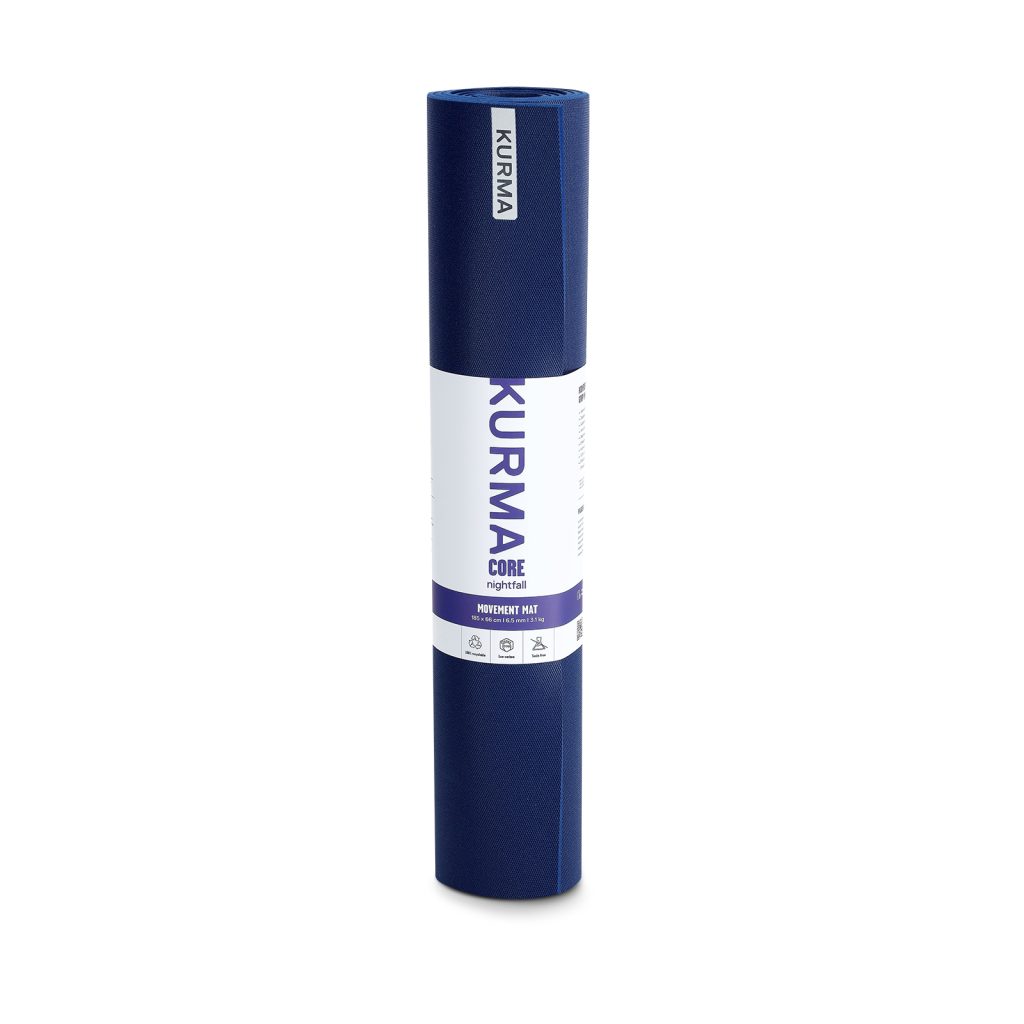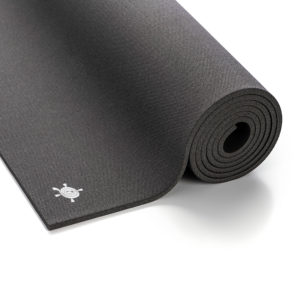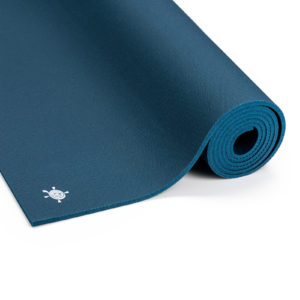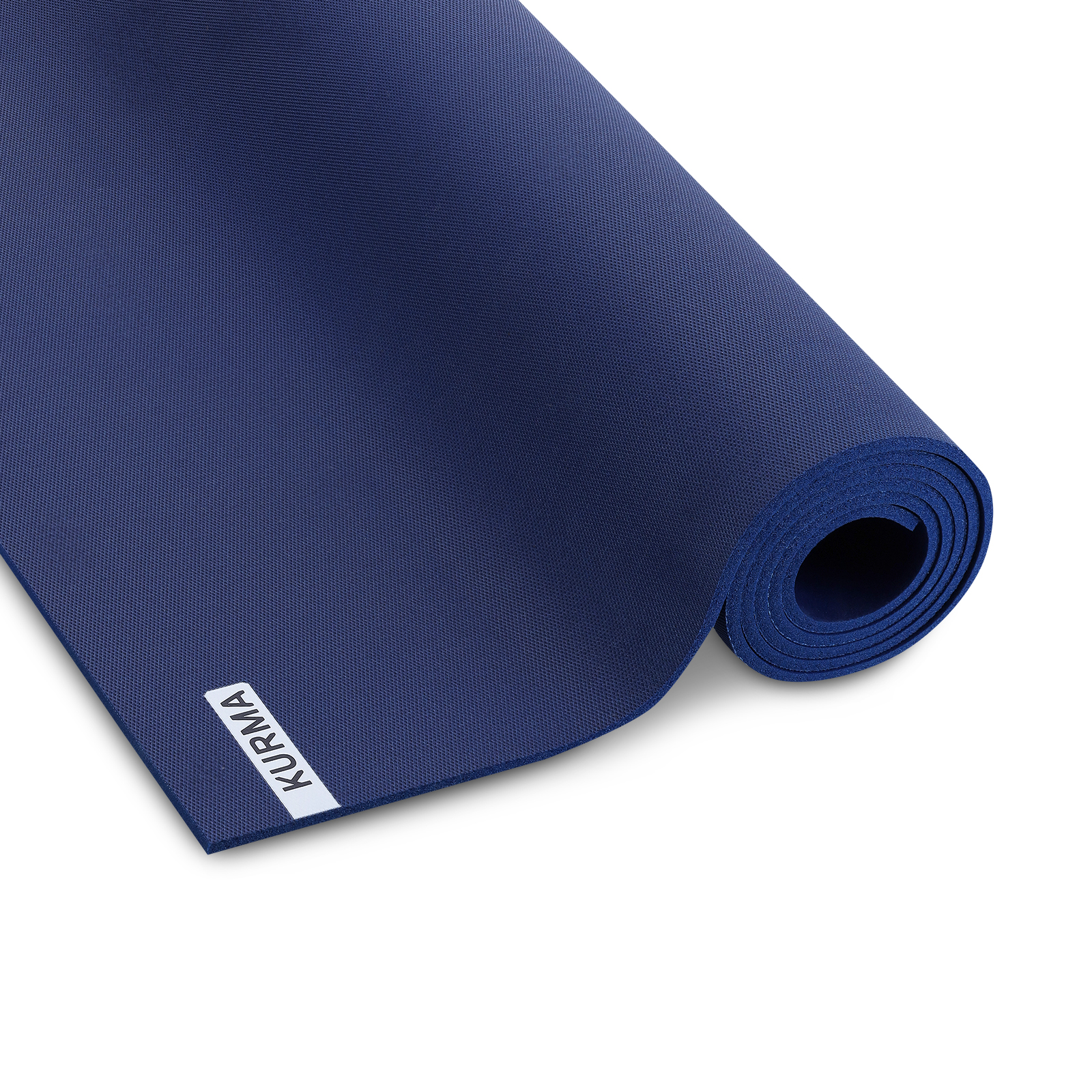Manduka PRO vs KURMA CORE: Which Professional Yoga Mat Will Win Your Heart?
Looking for a professional yoga mat that will last for years, but feeling lost in all the options? We get it. In this comparison, we put the Manduka PRO next to the KURMA CORE, two top performers in their class. Perfect for yogis who don’t want to compromise on quality and performance.
The Numbers at a Glance
Both mats are true workhorses, but there are subtle differences. Here are the key specs side by side:
Material & Dimensions:
- Manduka PRO: High-quality PVC, 180 x 66 cm or 215 x 66 cm
- KURMA CORE: High-quality PVC, 185 x 66 cm, 200 x 66 cm and 220 x 66 cm
→ The CORE Black also offers extra XL options: 200 x 80 cm and 200 x 100 cm.
Weight & Thickness:
- Manduka PRO: 3.4 kg, 6 mm thick
- KURMA CORE: 3.1 kg, 6.5 mm thick
Usage:
- Manduka PRO: Single-sided use
- KURMA CORE: Double-sided use with different textures
Certification: Both mats are STANDARD 100 by OEKO-TEX® Product Class I certified and 100% recyclable. They’re even made in the same country: Germany.

The Double-Sided Story
“The KURMA CORE can be used on both sides. The bottom of the Manduka PRO is not intended for yoga practice.”
This makes the KURMA CORE next-level practical. Relief side for Iyengar and strong standing poses, smooth side for dynamic flows. Many Ashtangis deliberately choose the smooth side for its 15% extra grip with light perspiration. Two sides, two different applications. Both sides have a logo, so you’ll always know where you stand.
Material & Texture
Both mats use premium PVC with a closed-cell structure. The result? Extremely durable and easy to clean. The Manduka PRO has one working surface with rounded dots on the bottom. The KURMA CORE plays a different game: two different surfaces, each with its own superpower.
Thickness & Comfort
At 6.5 mm, the KURMA CORE is slightly thicker than the 6 mm Manduka PRO. In practice, you’ll hardly notice the difference. Both offer excellent joint cushioning.
Grip & Anti-Slip
Here’s where it gets interesting. Both mats score equally in dry grip and stability. The top of the Manduka PRO has the same grip qualities as the bottom of the KURMA CORE. Plot twist: the bottom of the Manduka PRO (with those round dots) gives less grip than the top of the KURMA CORE with its fine relief texture.
The Bottom Line
In terms of performance, these mats are almost identical. The Manduka PRO plays it safe with its long-standing reputation and lifetime warranty. The KURMA CORE offers more flexibility with its double-sided design and just a touch more comfort thanks to that extra half-millimeter thickness. For versatile yogis who want to adapt their mat to their practice? KURMA CORE all the way.

- All-in-one Pro
CORE Black XL 220 x 66

- All-in-one Pro
CORE Twilight 200 x 66
Frequently Asked Questions Manduka PRO vs KURMA CORE
Both mats are built to last for decades. Manduka offers a lifetime warranty on its PRO series. KURMA could easily offer the same the lifespan and durability are identical. The difference lies in marketing, not quality.
The CORE is a professional mat suitable for yoga, fitness, and Pilates, while many Manduka mats are primarily designed for yoga. With a thickness of 6.5 mm, the CORE offers extra cushioning for both gentle and intensive workouts. Whereas with Manduka you would often choose a separate mat for fitness, the CORE eliminates the need for multiple mats. This not only saves money but is also more sustainable.
With light perspiration, both the CORE and the Manduka PRO series offer sufficient grip, thanks to their closed-cell PVC material. With heavy perspiration, grip on both mats may decrease. In that case, we recommend using a towel or mat cover with either brand for extra safety.
For light perspiration, both the CORE and Manduka PRO are perfectly fine to use. For heavy perspiration, a rubber mat with an open-cell structure, such as the GECO, is recommended. These absorb perspiration better and reduce slipping during Hot Yoga.
The CORE has a textured side, ideal for Iyengar, Hatha, and strong standing poses, and a smooth side for dynamic yoga such as Ashtanga or Vinyasa. Manduka PRO mats can only be used on one side, making them less versatile.

